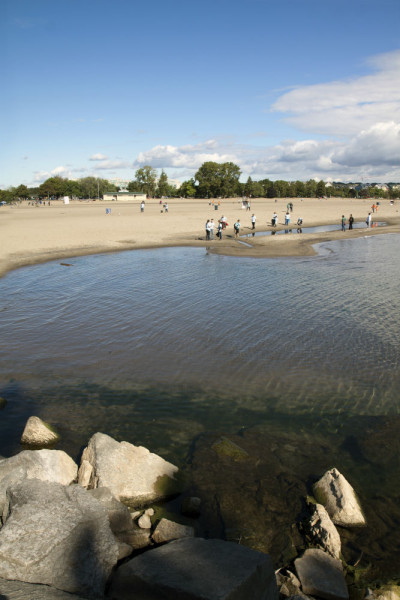Wanted: 64,000 Volunteers to Save our Shorelines
If you can imagine crossing Canada three times end to end – between Vancouver, B.C. to St. John’s, N.L. – then you might begin to recognize the impact that shoreline litter has had in the country. That distance – roughly 21,775 kilometers – is about the length of shoreline that has been cleaned throughout the history of the Great Canadian Shoreline Cleanup, presented by Loblaw Companies Limited.
Celebrating its 20th anniversary this fall, the Great Canadian Shoreline Cleanup, a joint collaboration between Vancouver Aquarium and WWF, is the largest direct-action conservation initiative in Canada, and is the third largest contributor to the International Coastal Cleanup, led by the Ocean Conservancy. Although the program has made great strides during its history to help create healthy waters, shoreline litter continues to be a significant environmental issue for Canada’s wildlife and communities.
Shoreline litter does more than mar the beauty of our ecosystems; it actually puts wildlife and people at risk. From leaching harmful chemicals into the water, to entangling wildlife, to upsetting the balance of the ecosystem, the impact of shoreline litter is far-reaching.
The widespread effects of shoreline litter include:
- Economic damage to areas that rely on tourism or water-based industries, like fishing.
- Local wildlife run the risk of getting tangled in or ingesting litter or other pollutants.
- Organisms often attach to litter as it flows through water systems, causing invasive species to infiltrate foreign habitats and damage the sensitive balance of the ecosystem.
- Animals like sea turtles often mistake plastic bags for jellyfish and swallow them. This clogs their digestive tracts, leading to starvation and death.
- Water quality is affected by the toxins emitted from litter.
Last year, more than 57,000 Canadians participated in the Great Canadian Shoreline Cleanup. These individuals cleaned more than 3,100 kilometers of shoreline (the approximate distance between Vancouver, B.C. and Thunder Bay, O.N., or 75.5 marathons), amounting to more than 136,000 kilograms of debris (the approximate weight of 30 large school buses).
Although 136,000 kilograms was a huge amount of litter cleaned last year, it also shows that the issue of shoreline litter is nowhere near disappearing. And if you think the weight of last year’s litter sounds staggering, think about the fact that throughout its 20-year history, Shoreline Cleanup has picked up approximately 1.2 million kilograms of shoreline litter – the approximate weight of 259 school buses.
That’s why this year, the goal of Shoreline Cleanup is to “shore up” 64,000 participants – and we hope you will be one of them. You can be part of the solution to keep our shorelines healthy for your community and wildlife.
This fall, we greatly need your help in our national cleanup effort, which will take place from September 21-29, 2013. Adopt a local shoreline as a site coordinator, or volunteer with an existing cleanup – right in your own community. Registering is as easy as visiting ShorelineCleanup.ca.



